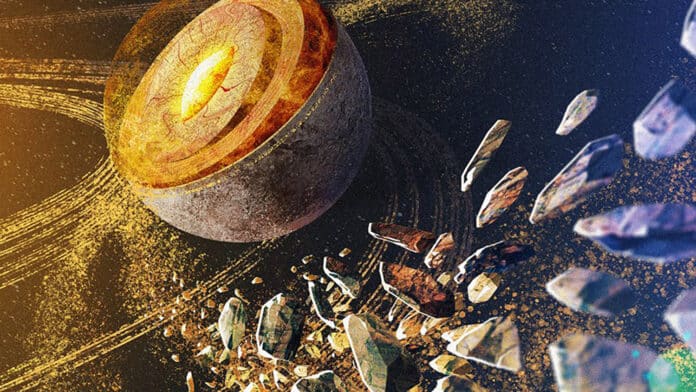The mechanisms by which planets, including ours, are formed are still a mystery to scientists. Examining the magma that rises from the planet’s interior can help scientists better understand how Earth was formed. Similar to how fossils provide us with information about Earth’s biological past, the chemical signatures from these samples contain a record of the timing and type of the ingredients that came together to make Earth.
Now, a Caltech study demonstrates that the early Earth accreted from hot and dry materials, suggesting that our planet’s water—essential for the emergence of life—must have come later in Earth’s formation.
Humans can’t go into our planet’s interior, but rocks present deep within can make their way to the surface in the form of lavas.
These lavas’ parent magmas can come from a variety of depths within the Earth, including the upper mantle, which starts at about 15 kilometers below the surface and extends for about 680 kilometers, or the lower mantle, which stretches from a depth of 680 kilometers down to the core-mantle boundary at about 2,900 kilometers below our feet. Scientists can investigate magmas that originate from various depths to learn the various “flavors” of Earth’s layers: the chemicals contained within and their ratios to one another.
The formation of the Earth involves the accretion of materials over time. And the samples from the lower and upper mantle give different clues to what was happening over time during Earth’s accretion.
According to the new research, the early Earth was predominantly made of dry, rocky materials since chemical traces from its interior revealed a dearth of so-called volatiles or easily vaporizable substances like water and iodine. In contrast, samples from the upper mantle showed three times as many volatiles as those from the lower mantle.
Based on these chemical ratios, scientists developed a model that demonstrated that the Earth was formed from hot, dry, rocky elements and that a significant addition of volatiles necessary for life, such as water, only happened during the final 15% (or less) of the formation of the planet.
The discovery significantly contributes to theories of planet formation, which has recently seen several paradigm shifts and is still the subject of active scholarly debate. In light of this, the new study makes significant inferences about the makeup of the constituent parts of Mercury and Venus. These two additional terrestrial planets are thought to have evolved from similarly dry materials.
Francois Tissot, assistant professor of geochemistry and Heritage Medical Research Institute Investigator, said, “Space exploration to the outer planets is really important because a water world is probably the best place to look for extraterrestrial life. But the inner solar system shouldn’t be forgotten. There hasn’t been a mission that’s touched Venus’s surface for nearly 40 years, and there has never been a mission to the surface of Mercury. We need to be able to study those worlds to understand better how terrestrial planets such as Earth formed.”
Journal Reference:
- Weiyi Liu, I/Pu reveals Earth mainly accreted from volatile-poor differentiated planetesimals, Science Advances (2023). DOI: 10.1126/sciadv.adg9213
